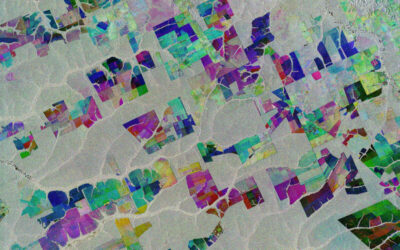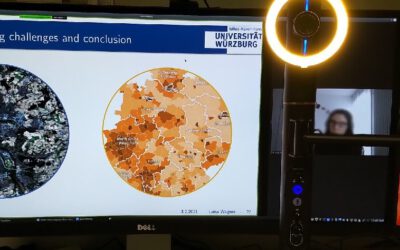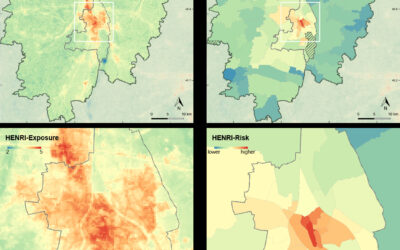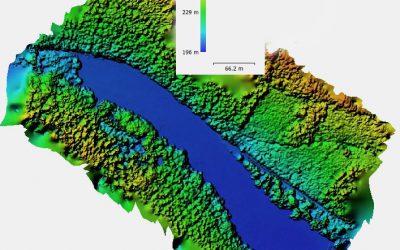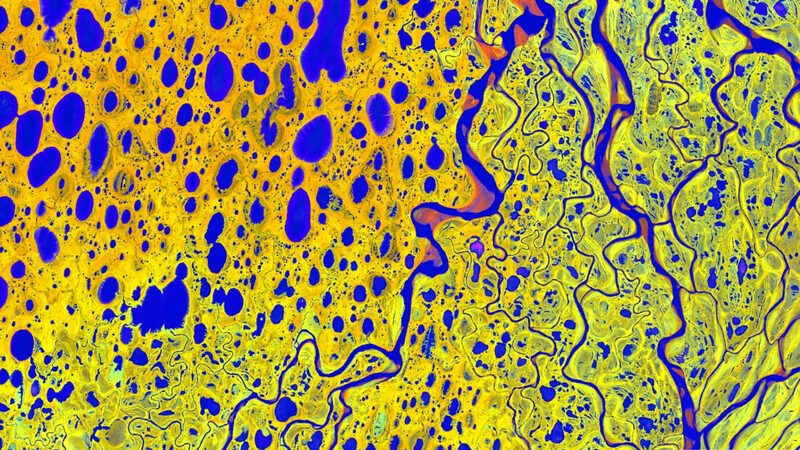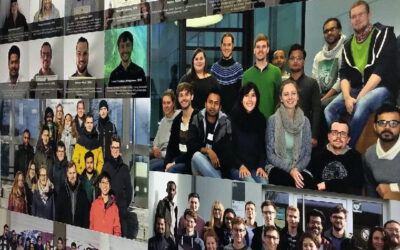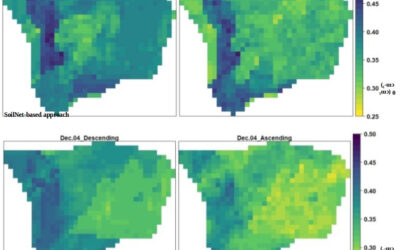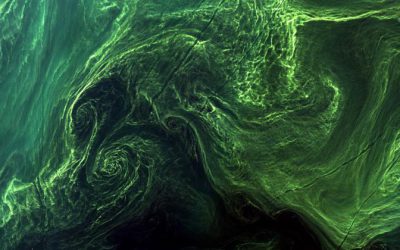Aim
In this module you will gain a detailed understanding of the advantages and challenges of Earth observation using Light Detection and Ranging (LiDAR) systems. Compared to other types of remote sensing data, the data from active Light Detection and Ranging (LiDAR) systems is of particular importance for local studies, where the 3D component (height) of objects is of relevance. Commonly LiDAR data is applied it in the field of digital terrain modelling, in forestry – e.g. for canopy height assessment, or urban structure applications. LiDAR embraces a range of active remote sensing systems mounted on different platforms, which provide valuable information for characterization of horizontal and vertical structure of the earth surface by measuring the travel time of laser pulses in visible and near-infrared spectral domains. The quality of scanning depends on the nature of the LIDAR system (discrete-return or full waveform) as well as on a set of other terrain- and data-driven factors. This course provides you with an overview on the theory and applications of LiDAR data, with a particular focus on airborne laser scanning. Following the initial theoretical sections on the principles and basic characteristics of LiDAR data, diverse practical steps and exercises will be implemented to provide real-world examples to illustrate how the LiDAR point clouds can be applied to extract information on terrain, surface and vegetation. These information will be further employed to model vegetation structural attributes on multiple spatial scales ranging from single trees to landscape levels.
Content
Block 1: Introduction to LiDAR (how does laser scanning work?)
- Reminder on general remote sensing issues: difference between active and passive sensing
- History of LiDAR measurements
- Basics of LiDAR data measurements (platforms, sensors)
- Airborne vs. spaceborne LiDAR: history, applications and data access
- Measurement of travel time of laser light (pulsed time of flight)
- On the concept of “structure”: why a third dimension is crucial?
Block 2: Principles of LiDAR measurements
- Platform navigation, orientation and positioning
- Difference between types of data acquisitions: discrete return and echo waveform
- The recorded parameters: elevation, height, signal intensity and co.
- The concept of „single-pulse“ vs. „multiple-pulse“
- How are the incoming returns recorded? first come- first served!
- Terrestrial LiDAR measurement: one position, rotating scanner
- Data formats and big data-management: each byte matters!
Block 3: Elevation models:
- General thoughts: why are the elevation models essential?
- Digital terrain models
- Digital surface models
- Normalized DSM (Canopy height models)
- Application fields: Forest, landscape and habitat representations
- Magnified focus on Forest (basic and derived parameters): Diameter at breast height, height, tree type proportions, tree type mapping, crown closure, stem count, growing stock und aboveground biomass
- Single tree measurements
- Urban: City models, roof top and building footprints
Block 4: Exercises in Open-Source domain of LiDAR data processing (Fusion/LDV, LASTools, R)
- Exercises on point cloud processing
- Import, export, visualizations and rendering
- Sample measurements, single tree measurements and associated tasks
- Elevation models
- Data trimming, cropping, smoothing and generalizing
- Catalog and descriptive communication
- Extraction of metrics for modeling purposes
- Thoughts on metrics
- Intensity: yes or no?
- Multi-scale metric extraction
- Multi-source metric extraction
- Class works and workshops (CIP-Pool/Homework)
- Literature review, discussion groups and public presentations
Coding
Coding examples and individual work will be covered
Software
Various software programs will be used, but mainly OpenSource software such as R.
Techniques
Different techniques will be introduced and practically applied.
Content
The content of scientific with regard to the audience will be discussed.
General Course News and Updates
internship presentations
On Monday March 1st at 10am the following internships will be presented: Marius Witt, Baby it's cold outside - Interning at DLRs Polar Team, internship at DLR. Jakob Wachter, Potential use cases of a self established database for social media data, internship at...
Great Earth Observation presentations despite distance learning
Despite the online courses we learned and managed to deliver great presentations on remote sensing data analysis in our courses and also improved our virtual presentation skills which might also partially be valuable in future conference or workshop presentations.
Our EAGLE students with UAV and field work jackets
Our EAGLE students preparing our UAVs with thermal, multispectral and Lidar sensors for the upcoming field work season. Also wearing our new field work jackets so that we all are easily recognizable as Earth Observation researchers.
MSc thesis defense by Patrick Sogno
On Monday, 25th of January at 10 a.m., Patrick Sogno will present his M.Sc. thesis "Earth Observation for Exposome Mapping – Proof of Concept and Case Study in Augsburg, Germany". from the abstract: "Non-communicable diseases – NCDs – (asthma, cancer, or diabetes, for...
internship and inno lab presentations
On Wednesday, 27th of February at 2pm we will have the first set of internship and innovation laboratory presentations in 2021: Yan Chak Christopher Chan: Start-up life and Deep Learning (Internship) Nils Karges: Noise and its relation to urban structural types...
internship, inno lab and MSc idea
On Monday 21st of December at 10am we will have the following presentations: Camilo (Internship)"Forest cover change between 2000 and 2020 in El Chaco ecoregion, Paraguay" at DLR Johannes Mast (Thesis Idea):"Measuring Urban Polycentricity using Remote Sensing"...
EAGLE wall of graduates is growing steadily
Our EAGLE wall of fame is being continuously extended by pictures of our new graduates and the group pictures of our EAGLE cohortes. Great to see their pictures on our wall and following their career past the EAGLE M.Sc.. Very interesting positions from companies to...
MSc defense by Aiga Taghavi
Aida Taghavi will present her M.Sc. thesis "Potentials of Cosmic-Ray Neutron Probes for Assessing and Mapping SAR-based Soil Moisture in a Mediterranean agro-forestry ecosystem" on Dec. 15th at 1pm. From her abstract: "Accurate near-surface soil moisture (~ 5cm,...
Internships, inno lab and MSc ideas presentations
On Monday, Dec. 14th at 10am, we have another set of internship, innovation lab and MSc. thesis idea presentations: Sandro Groth: Multitask Deep Learning and Google Street View: Assessing seismic building vulnerability in Santiago de Chile (Internship)...
MSc idea & internship
On Monday, Dec. 7th at 10am, various internships, innovation labs and M.Sc. ideas will be presented: Malin Fischer: EO and spatial data analysis for rural village assessment - example from the electrification sector (Internship) Henrik Fisser: Road traffic...

